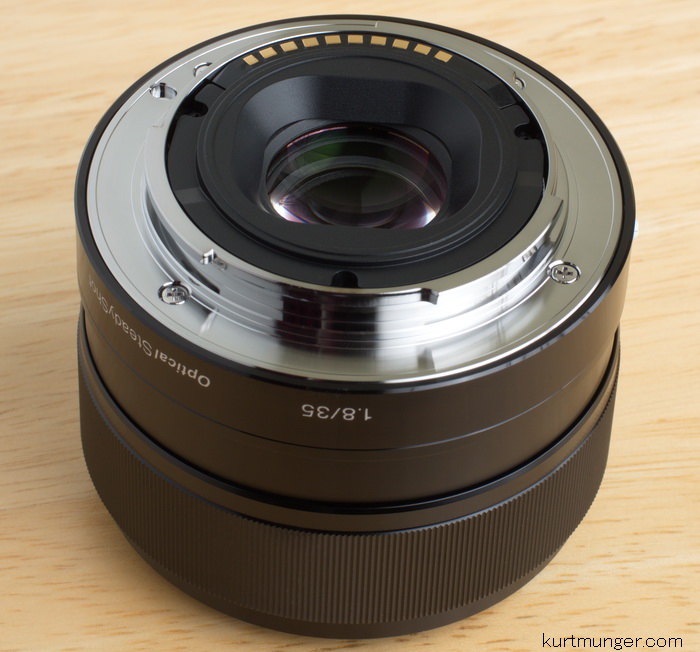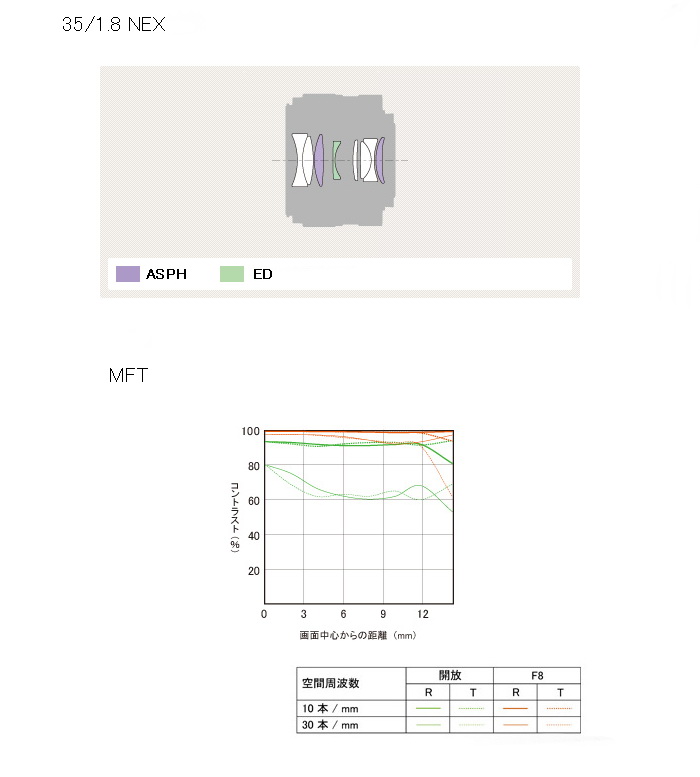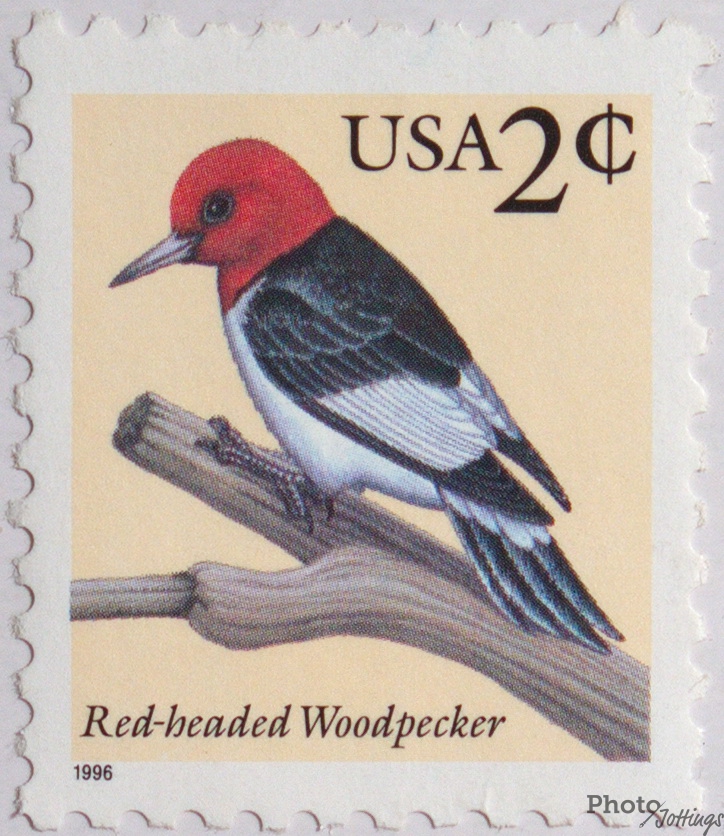|
Full review of the Sony NEX 35mm F/1.8 OSS lens.
The Sony NEX-C3 was used for this review. For a better understanding of terms and methods used in this review, go here.
The usual center, mid-section and corner crops are located at the very bottom of the page.
Introduction.
The Sony NEX 35mm F/1.8 OSS lens was introduced in early 2012, and become widely available in the late fall of 2012. This relatively small lens, (even smaller than this similar lens) is build solidly, has a smooth manual focus action and a silent auto-focus motor which is great for keeping focusing noise out of movies. The focal length of 35mm is considered ‘normal’ due to the smaller sensor used in the APS-C NEX E system, giving you approximately the same coverage as a 50mm lens in 135 film format. This lens has ‘optical SteadyShot’ and Sony claims a 4 stop advantage when using it. Based on my use, it’s more like 2 stops.
The Sony 35mm F/1.8 OSS lens has eight elements in six groups. Sony’s Japan website lists this lens as having two ‘asph’ elements, and one ‘ED’ element in the design, however, the US site as of this review is listing the lens as having six elements of which two are ‘ED’ and that’s it, oh well, I guess the specs got jumbled around a bit on the corporate ship before docking in the new world. Sticker on lens says made in China.
This lens uses an odd concave front element, reminiscent of some Canon and Zeiss glass in the 1970s.
Fit and finish are very good. The lens appears to be clad in high quality plastic and metal, (Sony says ‘aluminum alloy”) and has a metal mount, but it’s very light-weight. Filter size is 49mm, just like most NEX lenses to date. Focusing. This lens auto-focuses quickly, accurately, and without a peep. It’s much smoother and quieter than the SAM or slot-screw drive devices Sony uses on it’s Alpha system. The front filter ring doesn’t turn when focusing, so your polarizers and grads will work great. The focusing ring is easy to turn, and is damped about right.
The aperture blades form a nice circle from about F/1.8 to F/2.2, but as you stop down past that, the opening increasingly becomes hexagonal. That’s no big deal, I’m just pointing it out.
When the hood is mounted, you can still remove or install the front lens cap because it’s a pinch type design.
In the box is the lens, front and rear caps, plastic petal type hood, and owner’s manual.
Requisite product shots.
General information and specifications.
Optical qualities summary.
Lens flare/ghosting. Generally good control, see samples below.
Light fall-off. Nothing to worry about. See samples below.
Color fringing (CA). You’ll notice an abundance of axial color fringing at wide to normal apertures, but closing the aperture to about F/5.6 and smaller eliminates this. Lateral color fringing along the sides is well controlled.
Bokeh. Mostly smooth. See samples below.
Color. Seems about the same as other Sony lenses.
Close-up filter. N/A.
Coma. Virtually none.
Regular filters cause no additional light fall-off.
Filter size. 49mm. Other NEX Sony lenses that use 49mm filters; CZ NEX 24/1.8, NEX 16mm F/2.8, NEX 18-55 F/3.5-5.6, and NEX 50mm F/1.8.
Distortion. Almost zero!
Distortion sample below.
Distortion is not a problem with this lens, it’s basically flat, although there is a slight ‘wave’ to it, meaning the end is flat, with a rise about a quarter of the way in, dropping in the center, and repeating to the other end. It’s not really noticeable unless you take a picture of a straight line near the edge of the frame.
Bokeh samples.
Bokeh in the center area looks decent at all apertures with the aperture shape showing up early upon close inspection. I see some spherochromatism at F/1.8-4. Spherochromatism shows itself as colored tinges around blurred highlights, such as when the foreground is blurred, you’ll get red outlined highlights, with the background blurred, you’ll get green outlined highlights; this goes away as you stop down, and is mostly noticeable on fast lenses when used wide open. In our case above, the green blends in nicely with the plant leaves, so it isn’t really noticeable in these crops; however, magenta is noticeable. The focus point was about 10′ or 3m, with the background vegetation another 20′ or 6m away.
Full resized bokeh sample.
Bokeh looks smooth at close focusing distances, which is typical for many lenses. Here the focus distance is about a foot (300mm), with the out of focus highlights a foot or two in back.
Light fall-off
Light fall-off has a smooth transition into the centers, making it hard to spot unless you shoot test boards like this.
Flare and Ghosting
Ghosting control is average to good when super bright lights are in the image. About the only thing I see is a magenta streak if the sun is around the edge of the frame. There are a few colored blobs that show up too, noticeable in the second shot. Contrast holds up fairly well with the sun directly in the image.
Let’s check out the close-focus capabilities of this lens.
The sample shot was taken with the Sony NEX-C3 16.2MP camera, so don’t compare it with others that were taken with 12 or 24mp sensor cameras. The subject is a standard US stamp, 0.87″x 1.0″ or 22mm x 25mm. The shot was taken as close to the subject as focusing allowed; in this case a somewhat long 9.6″ (244mm), measured from the front of the lens barrel to the subject.
This lens has a reproduction size of 1:6.6, which is about average for this focal length. I see a relatively sharp stamp shot from F/5.6-8. As a side note; the “1996” on the bottom left of the stamp measures a mere 1mm wide.
Conclusion
The Sony NEX 35mm F/1.8 OSS lens is another welcome addition to the NEX family, producing sharp images with good contrast at most apertures, smooth bokeh, and almost no distortion. Build quality as well as fit and finish are quite good, and don’t forget the useful OSS (optical stabilization) built in. There are a couple of qualities I’d like to see improved, like center sharpness at the maximum aperture of F/1.8; it’s a little soft for a lens designed in 2012. Also, I see a somewhat high amount of axial color fringing, (occurring all over), but that type goes away as you stop down the lens, and it isn’t really noticeable using typical apertures in daylight like F/5.6 etc.
Currently, there isn’t much available in this focal length and speed (and auto-focus) for your NEX camera unless you include the Sigma 30/2.8. With that said, which is better if you’re a landscape shooter and don’t need the speed? For bargain conscious people, the Sigma will do just fine. Folks wanting to shoot in low light, hand-held conditions will definitely want to look closely at the Sony 35/1.8 with Optical SteadyShot.
|
Sample crops from the centers, mid-sections and corners.
|
Center
|
Mid-section
|
Corner
|
|
|
F/1.8
|
 |
 |
 |
|
F/2.2
|
 |
 |
 |
|
F/2.8
|
 |
 |
 |
|
F/4
|
 |
 |
 |
|
F/5.6
|
 |
 |
 |
|
F/8
|
 |
 |
 |
|
Sharpness at F/1.8 is lacking across the image, however, closing the aperture less than one stop to F/2.2 shows a noticeable improvement. The next big sharpness jump comes at F/4, where the centers and mid-sections are maxed out, with the corners getting a boost at F/5.6. From there on out, it’s all downhill due to diffraction. Notice the axial color fringing at almost all apertures, although not really noticeable in pictures without blown-out areas like you see here.
Note: the mid-sections and corner crops at F/1.8-2.2 look almost better than the center crops, but that’s due to light fall-off, which makes that area of the image a little darker and falsely sharper.
Please check out the Sony NEX 35mm F/1.8 OSS at B&H Photo and help support the site!
Bonus comp with Panasonic Leica 25/1.4.
Here’s a mini comp that should be taken with a grain of salt, and here’s why: I took the Panasonic images in the fall of 2012, and the Sony in January of 2013. As you can see, the foliage and light are far different. Both lenses were tested at the exact same spot, and all crops were taken from RAW, no adjustments. After posting this review, some people are wondering why the Sony image quality looks so lack luster at all apertures. Well, it’s just that the sharpness crops don’t tell the whole story. I decided to add the bonus crops as a way to compare the sharpness of the Sony 35/1.8 to another lens. I don’t own theses lenses, and no longer have them with me, so I can’t compare them directly. What you are seeing here is the best that I can come up with: re-read first sentence.
At the widest aperture, the Sony is a little soft as compared to the Panasonic, but don’t forget the Panasonic Leica Summilux 25/1.4 is the best ‘normal’ lens I’ve ever tested, and is more expensive than the Sony. As you stop down the apertures, the Sony perks up, and looks close to the Panasonic at F/2.8-4. I think Olympus (E-M5 used for review) is applying more RAW sharpening than Sony, that’s part of the difference. Remember, RAW is not “straight from the sensor.” Each manufacturer applies its own unique signature to the RAW file, it may be adjusting the output to be more colorful, sharper, less noisy etc, it’s not just doing that in jpegs only, although the default jpegs are the final ‘vision’ of the manufacturer.
Along the sides; I’m guessing the Sony is probably superior at all apertures, that’s because the Panasonic crops were taken inward of the Sony, meaning the Sony side crops are from the very last 340 pixels of the image, the Panasonic crops are almost 900 pixels from the side. I only used one side crop from each camera because the other images were too far off to be considered fair.
The Sony NEX 35/1.8 would make a nice landscape lens, it really holds its own against the best ‘normal lens I’ve ever tested, but it is a little soft wide open. |





















